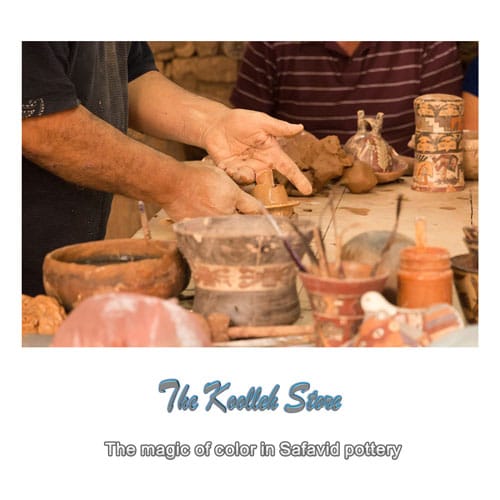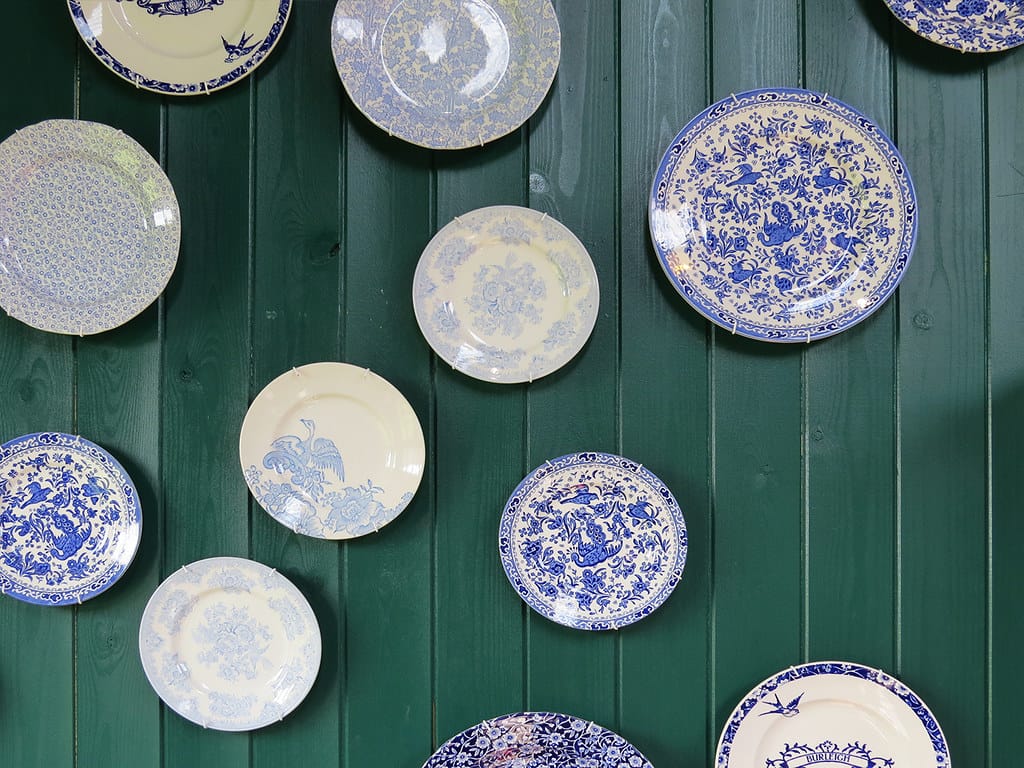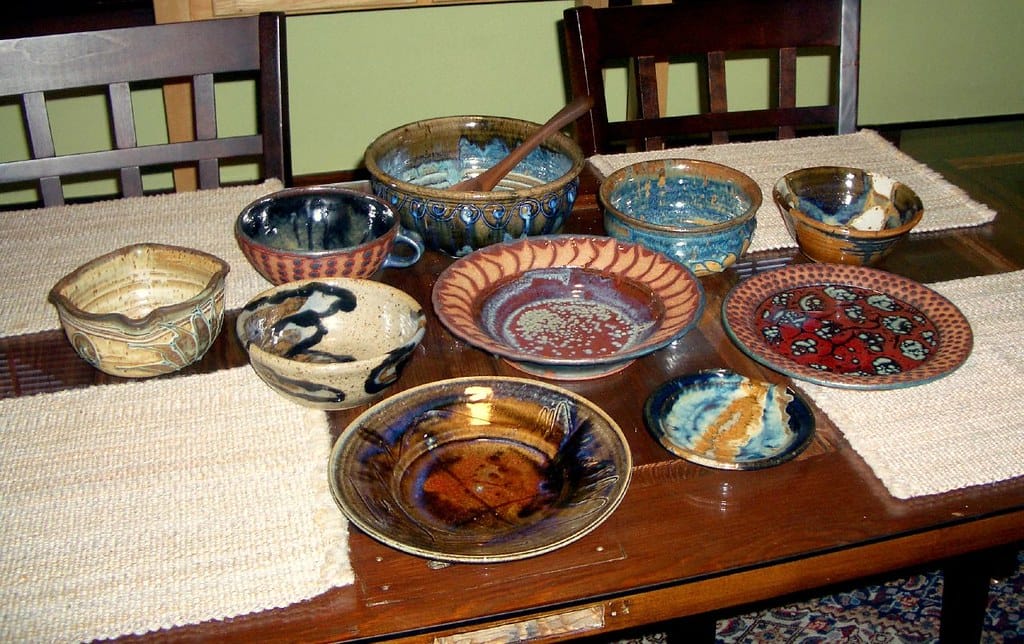The magic of color in Safavid pottery

Safavid pottery, like other arts, flourished and flourished, and according to the divisions based on the type of pottery progress at this time, the date and place of production of pottery of this period is determined.
Among the types of pottery left over from this period, a group of pottery from the ninth to eleventh centuries AH remains, which are probably not very similar in form and technique to their origin, and are called Kubachi. Are known. Numerous examples of this group have been found that have taken their name from a village in the Caucasus. It is thought that these pottery was not only made for local purposes, but also for trade in products such as hot and cold weapons, and that the main place of production was probably Tabriz. These dishes were usually plates and bowls that had a back edge and a light and delicate body, and were often made with red paint and white glaze. But the disadvantage of this type of glaze is that it is not resistant and is loose and durable. However, the technical drawbacks of these dishes can be overlooked due to the vibrancy of their various decorations.
The black designs under the turquoise, blue or green glaze of this category of dishes show the technical degradation of all kinds of dishes of the eighth century AH and even the seventh century. The type of decorations in blue and white colors and the low use of black color reminds of the adapted Chinese technology of the ninth or tenth centuries and shows the achievement of Iranian artists in the technique of Chinese pottery.
Some pieces of pottery that have been obtained from the Safavid era and belong to about 1009 AH are called seven colors and have a thin glaze in red or yellow color added to the color palette. In them, the influence of the Rhodian style is evident from the Ottoman Iznik (Nicaea), although the dominant design is pottery, figures or heads of men or women, and in this respect differs from the Rudian style.
One of the main centers for making pottery in the Safavid period of Kerman, which was undoubtedly the center for making dishes with a white body and denser than its Cuban types with white glaze and glaze with very small bubbles. The decorations in these pottery are in the form of bouquets of leaves and blue flowers, which seem to indicate the continuation of the blue and white style of the ninth century, and in fact the design of bouquets of flowers and leaves is reminiscent of leafy gilding patterns in southeastern Iran and It was common in the early ninth century AH.
Like the pieces of Cuban pottery, the pottery’s tendency to diversify increased with the advent of the eleventh century. In Kerman pottery, in addition to opaque red glaze and opaque green, it was usually decorated with fringes (frames). And this was while the main surface was covered with blue or white.
Another difference is the production of decorative objects imitating Chinese export exporters in the same era. Variety in the subject of decoration was done in two distinct styles: one was a mixture of Chinese motifs in the center, and the other type of decoration was the frame of black inscriptions, which were performed with the themes of Persian poems engraved between them.
The use of glaze was not limited to details, but often included the entire dish; Some objects often have blue glaze, which was cut inwards to reveal the white body of the dish.
Other dishes have olive or gray glaze, which is made entirely to mimic the pale green of China. Among the objects in Kerman, pots with openings for certain flowers have been found, which were probably obtained by merchants from the East India Company auction through Bandar Abbas, and later these pots influenced the form and decoration of tulip pots in the late 11th century.
After Kerman, Mashhad is one of the main centers for making Safavid pottery. It is thought that the production of white and hard-colored dishes, thin and transparent glazes has continued in Mashhad. In this style, the decorations are blue and often with black dashed lines, which creates a brighter and clearer effect than the works attributed to Kerman. The design in this style is very similar to the exported Chinese goods, and in fact they have surpassed the same designs.
Considering the traces of Chinese art, both in designs and in technique and color, on the pottery art of Mashhad, potters and their designers have probably seen the works of art of Chinese artists.
One of the reasons for the growth of art in Mashhad is due to the presence of Ebrahim Mirza. He was the nephew of Shah Tahmasb, who has been the patron and protector of art in Mashhad since 946 AH and has owned a collection of Chinese artifacts.
Of course, the role of the Safavid kings themselves in the spread of pottery techniques cannot be ignored; For example, in 1015 AH, Shah Abbas donated a porcelain vessel to the shrine of Imam Reza (as) in Mashhad and another vessel to a shrine in Ardabil in 1020 AH.
The forms of pottery that have been attributed to Mashhad are very diverse and include plates, bowls with rounded sides and teapot-shaped muskets, and examples of hookahs in the form of all kinds of thermoses, birds and cattle.

Three types of pottery are evidence of the rejuvenation of the artists of the 11th century and their influence on the exquisite pottery of the sixth and seventh centuries AH. In all three containers, the body is white and dense and has a bright glaze.
The first group of these dishes have golden ornaments that were probably revived in their main center, Kashan. The golden glaze often has a reddish tint that indicates the high use of copper, and is used on backgrounds that are white, blue, or sometimes yellow. The designs are often painted with leafy, thin and delicate branches.
The second category has bright monochrome glazes in green, amber or purple colors that are used on dishes that are probably imitations of metal dishes or have decorative scenes in prominent form. If we want to describe the shape of these dishes, we must say that these are the same cups that young people in love with Reza Abbasi’s paintings have in their hands for drinking in the early 11th century.
The last group are vessels that have a very clear glaze on a very white body and are probably engraved or gridmed in the sixth century. This type of grid engraved with delicate engravings was known in Europe as Gambroon (the old name of Bandar Abbas) and was probably exported to Europe from this port.
The use of beautiful pottery and glazes in the Safavid era is not limited to the use of pottery, but sometimes the art of pottery and glazing was used only for the production of decorative objects, such as a pair of high-heeled shoes with white and blue glaze. Which is now housed in the British Museum.
In addition to making decorative utensils and objects, the art of pottery in the Safavid era also found its way into the decoration of architectural buildings; Explain that from the 11th century AH, large-scale designs and patterns of illustrated tiles were made for use on pomegranates and behind hugs. The half-trunk and sculpture motifs, known as the Kubachi style, as well as the images of the grand and magnificent celebrations that reflect the style of the 11th century court artists, are among the themes used in the tiles.
The favorite colors used in these tiles are blue, white, green and yellow. The use of pottery in the building later entered the Qajar art and the creation of illustrated works with animal, human, landscape and floral sculpture designs and floral designs in various colors such as pink, bright yellow and reddish brown to imitate Printed works and photographs were found and used in Qajar buildings.


